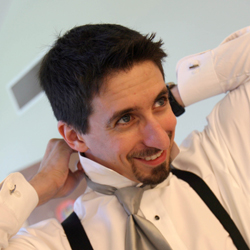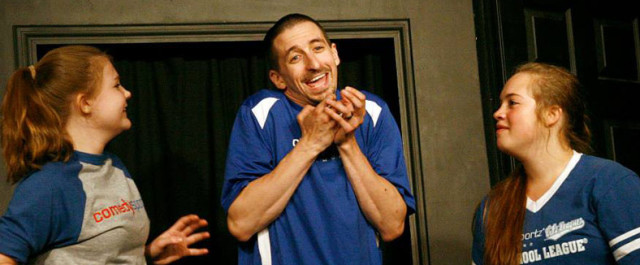Jacob Allard
I am a writer.
I am an actor.
I am an improviser.
I am a teacher.
All of these titles are a part of who I am and each one has influenced my writing in some way. Today I’d like to look at acting and improvising.
Throughout my life I’ve focused on two main art forms: acting and improvising. Use of dialogue in both is essential to each art because it shapes how a scene works out in plays and movies. I had read probably over a hundred plays before I hit college to obtain my Bachelor’s in theatre education and then had to read yet more plays. Plays were important to us actors–not just to perform, but to understand how a playwright gets us to say what he/she wants us to say.
So, Jake, what the hell does this have to do with writing fiction or nonfiction? Simple: DIALOGUE. I spent most of my life learning how to perfect the art of speaking to another actor or actress on stage. More importantly, I spent my time learning how to read a script to see what the writer is telling me. Not just their literal words, but the same literary techniques we use as writers.
For example: Shakespeare (I know…starting tough) would use the sounds of the words to help show what a character is feeling. Here we have A Midsummer Night’s Dream, Act III, Scene II:
How low am I, thou painted maypole? speak;
How low am I? I am not yet so low
But that my nails can reach unto thine eyes.
The sounds in this passage are sharp, biting. Letters like “t” are abundant in this passage; rumors abound that Shakespeare used this alliteration to show the character’s feelings on wanting to “cut through the other character.” Some modern playwrights have taken on this technique, and we as fiction writers can do the same.
Look at how your dialogue sounds. Listen to it in your head, say it out loud, record it and listen to it, or even have some friends or family read that part out loud and really listen to how it sounds. Can you cut another person down with your t’s? Can you show sadness by having someone speak with more long vowel sounds, so it almost sounds like they’re crying with consonants? One of my favorite directors’ dialogue mantra was “vowels are the emotion of a sentence; consonants are the intellect holding it together and helping it make sense.” How much of this can you apply to your writing?
The art of improvisation has a simpler way of helping me in my writing. Many times (mostly when I was starting out after getting a better handle on the language) I would stop myself and re-read what I was writing only to trash the whole thing. Many other writers have their own way of saying it (i.e. Lamott’s way is “write a shitty rough draft”), but with improv, you are working with your teammates to create something that is brand new and comes from absolutely only in the creative part of the imagination. Rule number one of improv to allow this creative process to continue is called “yes, and.” This idea of “yes, and” is a beautiful one; it means “yes, I accept what you’re giving me, and I’ll move the story forward.” Improv, as well as all acting, really, is nothing but story showing. Actors get up on the stage and show the audience a story (I say showing and not telling because an acting mantra is “show us, don’t tell us.”) In improv, we’re not just showing a story–we’re creating one that stays true to these characters we’ve envisioned. It’s truly the most organic form of story creating that I’ve gotten to experience. We commit to our characters and allow him or her to carry us on a story, and if we deviate from what that character would do, our audience will notice it–and most likely wake from their fictive dream.
The same can happen to us as writers. We create a story and a couple of things can happen. We decide half-way through our rough draft that the story created is utter bullshit, we change the character’s personality and make him or her to do things that don’t ring true, or we just force the story to go a way that’s unnatural. One thing I’ve incorporated in my more current writings is this mentality of “yes, and.” I create my characters, I commit to the characters, and during the rough draft I don’t EVER say “no.” I let them make up their own minds. I let their actions push through, and I let their actions dictate what happens in the story. I will go back and edit later, maybe removing an action that doesn’t fit as well as I thought it did initially, but I find that my “shitty rough drafts,” to snag a line from Lamott, are significantly less shitty than I thought they were. It makes my edits go much more smoothly. So, the next time you hit a snag in a story, look back at what happened and say to your characters “yes, and” and then build your story further.
Keep writing!
 Jacob Allard is the Managing Prose Editor at South85 Journal. He graduated Converse College with his MFA in creative writing in 2014. When he’s not writing or editing he is usually found teaching, improvising, acting, or enjoying the outdoors or the City of Richmond, where he calls home.
Jacob Allard is the Managing Prose Editor at South85 Journal. He graduated Converse College with his MFA in creative writing in 2014. When he’s not writing or editing he is usually found teaching, improvising, acting, or enjoying the outdoors or the City of Richmond, where he calls home.
